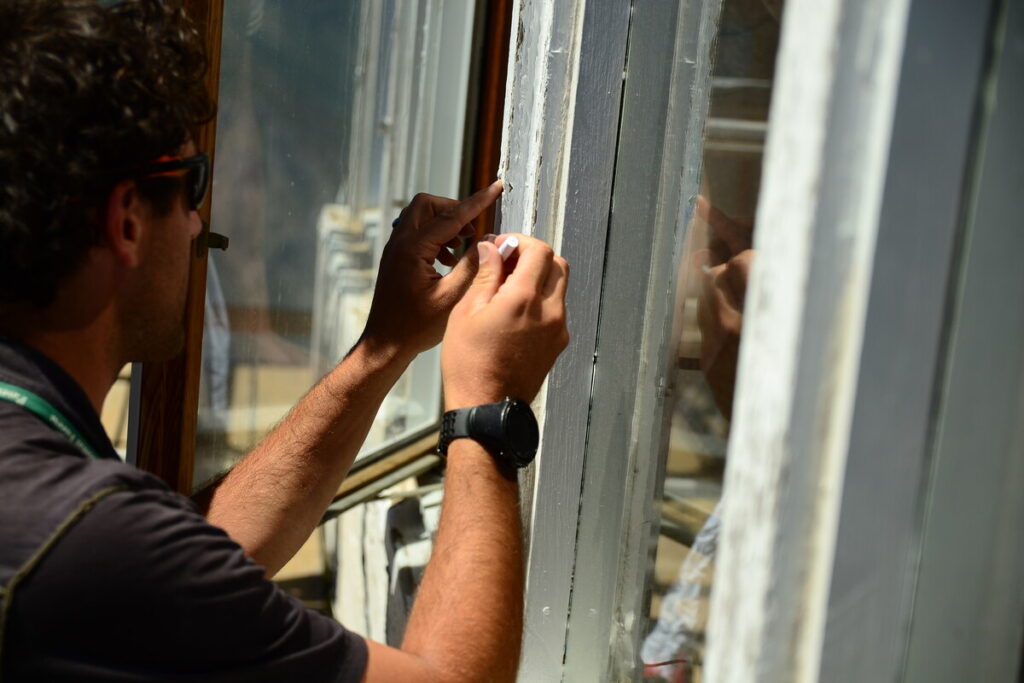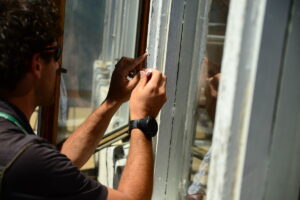If you own or manage an older building, you’ve probably heard the warnings about lead paint. But knowing you should test for it and actually understanding the best way to do it are two different things. With multiple testing methods available, how do you know which method is right for your situation?
Here’s what you need to know about lead paint testing for old homes.
Lead Paint Testing Is No Longer Optional
Most homes built before 1978 contain, or once contained, paint made with lead, which can cause a host of health problems, especially for children. If you think your building is exempt just because it looks well-maintained, you should probably think again.
Lead is often found in paint used in buildings built before 1960, and when damaged, wet or scraped, old paint turns into dust or chips that young children can get onto their hands and straight into their mouths. The health risks are serious; we’re talking brain damage, developmental delays, learning disabilities, and behavioral problems that can’t be reversed.
Local Law 31 requires impacted landlords to have an X-Ray Fluorescence (XRF) lead inspection conducted by an EPA-certified inspector to test for the presence of lead-based paint in multiple dwelling residential buildings, with all inspections required by August 9, 2025.
Also Read: Lead Exposure Risks in Homes: Why Abatement Is Essential
Method 1: DIY Lead Test Kits
Walk into any hardware store and you’ll find lead test kits for $10-$25. They’re cheap, readily available, and promise quick results.
Home lead test kits use chemicals that change color when they react with lead, most commonly using sodium sulfide or sodium rhodizonate solution applied to a notched surface or paint chip.
The process seems straightforward:
- Make a small cut through all paint layers (about 1/4 inch deep)
- Apply the chemical swab to the exposed paint
- Wait 30 seconds to a few minutes
- Check for color change
Rhodizonate-based test swabs will turn red if lead is present, while sulfide-based kits will turn dark grey or black. A drawback, however, is that these test kits cannot determine the extent of lead-based paint and may not accurately discriminate between lead-based paint and other paints.
Method 2: Paint Chip Sampling
This method involves removing paint chips (samples) from various surfaces and sending them to an accredited lab for analysis, with samples typically needing to be at least 4 square inches in size for accurate testing.
The process looks like this:
- Sample Collection: A trained professional carefully removes paint samples from multiple locations
- Proper Removal: All layers of paint must be removed together during the sampling process, as older layers underneath the surface layer are more likely to contain lead, especially important for old buildings which have been repainted over.
- Laboratory Analysis: At the lab, atomic absorption spectrophotometry (AAS) or inductively coupled plasma (ICP) is used to test the sample for the presence of lead.
- Results: You receive a detailed report showing exact lead concentrations
Paint chip sampling works well when:
- You need definitive results, but don’t need them immediately
- Budget constraints prevent XRF testing
- You’re testing a limited number of surfaces
- You need documentation for regulatory purposes
Method 3: X-Ray Fluorescence (XRF) Testing
When it comes to professional lead inspection methods, XRF technology is the required method.
X-Ray Fluorescence, commonly called XRF lead testing, is a technique using a special handheld machine operated by a trained and certified lead inspector.
XRF allows identification of lead up to 40 layers of paint on most painted surfaces without ever disturbing them.
XRF lead testing involves surface-by-surface readings to determine whether lead-based paint is present, with the inspector holding the XRF analyzer directly on each painted surface to take measurements, which are then classified based on either state or federal standards.
The inspector will systematically test:
- All painted walls in every room
- Window frames and sills
- Door frames and doors
- Trim, moldings, and baseboards
- Radiators and pipes
- Stairways and railings
- Common area surfaces
Trust Manhattan Lead for Expert Testing and Complete Compliance
When it comes to lead paint testing for old homes, the method you choose matters enormously. EPA recommends that you hire a certified inspector or risk assessor to test for lead-based paint in your home, especially for determining whether lead-based paint is present in pre-1978 housing and childcare facilities subject to renovation regulations.
For professional lead inspection methods, Manhattan Lead is your partner. Our EPA-certified inspectors use state-of-the-art XRF technology to provide fast, accurate, non-destructive testing that meets all NYC requirements, including Local Laws 31, 66, 111, and 123.
Don’t wait until you’re facing violations, fines, or health problems. Contact us today for a thorough assessment that gives you the answers you need and the documentation you’re required to maintain. We’ll walk you through the entire process, explain your results, and help you understand your next steps.




